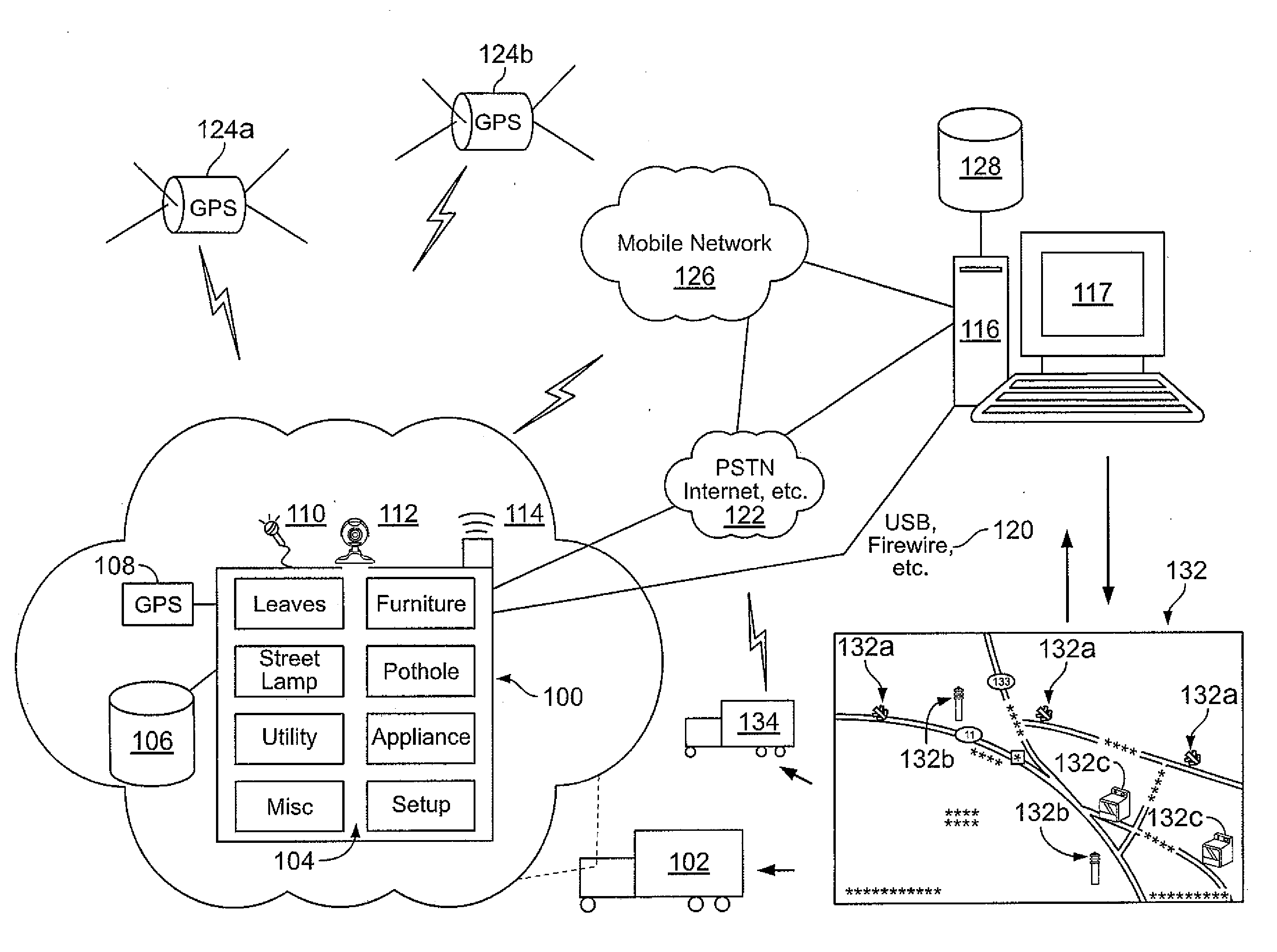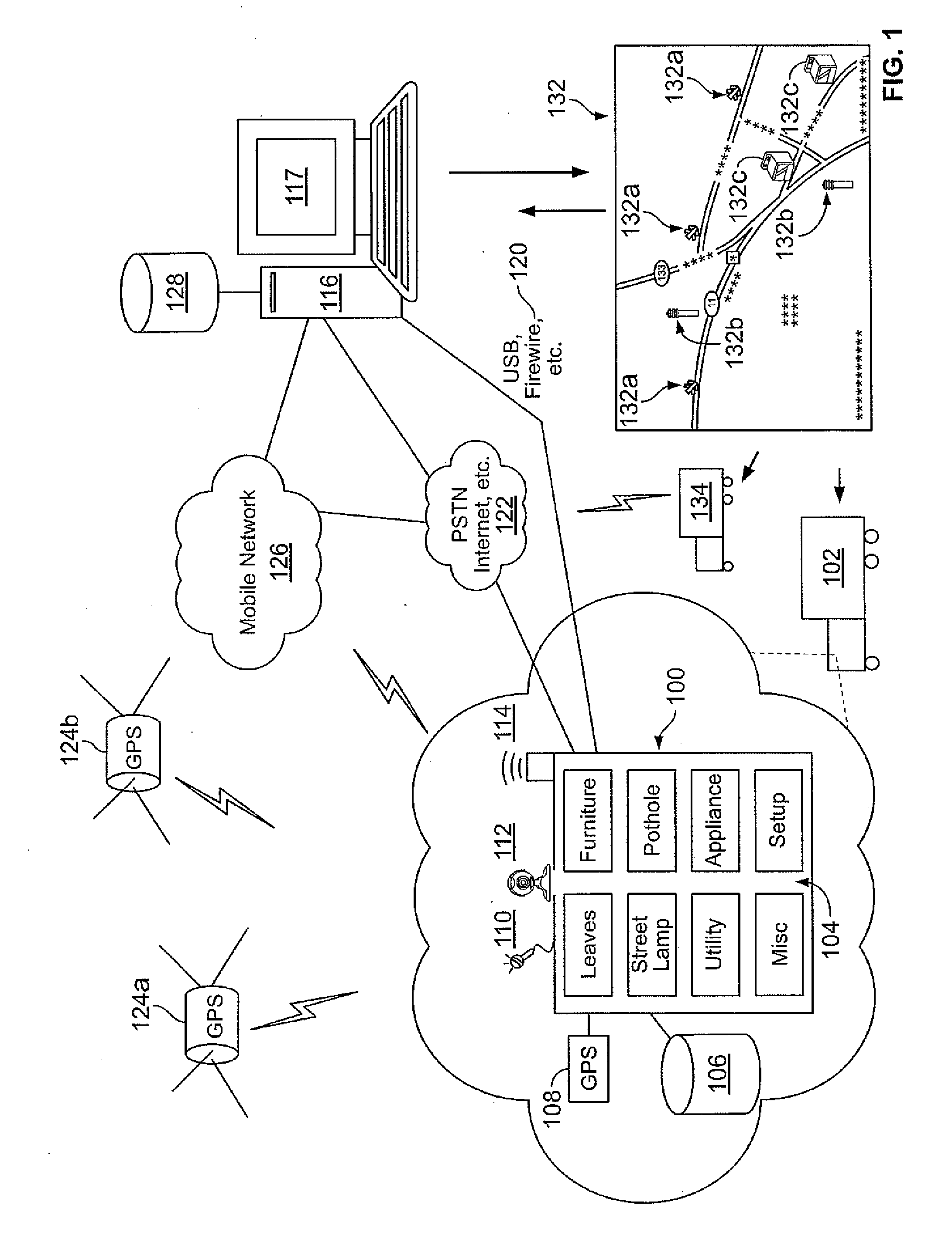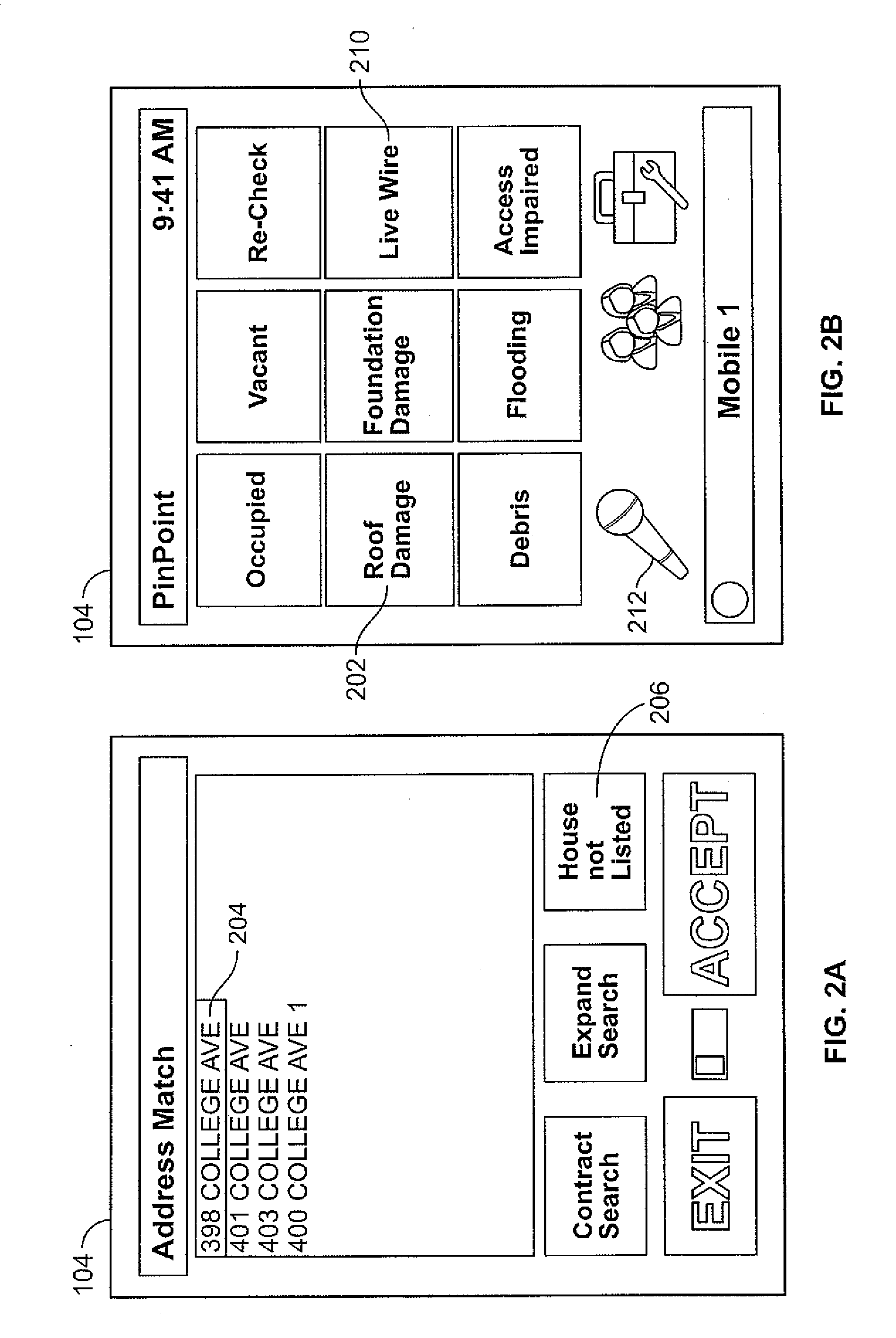While general household refuse can be placed in garbage containers for pick-up, larger or bulkier items such as refrigerators, furniture, hot water heaters, and the like are much more difficult to
handle and generally not included in the day-to-day household refuse service.
Unfortunately, some citizens do not follow those policies and simply leave refrigerators, furniture and other bulky items
lying beside roads, or worse, in vacant lots where they tend to collect into improper garbage heaps.
This method is not often an effective or efficient methodology for handling this type of refuse.
Notes can be lost, the location can be misidentified, and
radio communications can be misunderstood.
When operators use hand-writing to
record the location of special debris
pickup locations, problems exist that include inaccurate transfer of information, excessive administrative
processing, and
delay in collection of special debris.
Further, there is no present centralized method for collecting item locations or item type; notes can be lost, the location can be misidentified, and
radio communications can be misunderstood.
The current method of handling out-of-the-ordinary items is also inefficient and harmful to the environment since it involves periodic and random patrolling of every
city street by heavy loading and hauling equipment in the hopes of randomly locating these items.
This extensive patrolling incurs high labor, fuel, and other equipment costs, and results in excessive
wear and tear on road surfaces, as well as excessive and hazardous presence of
heavy equipment in residential areas.
Adverse environmental effects also result from the excessive carbon emissions from the extensive equipment operation.
Another problem that exists in the garbage pick-up service industry is that certain citizens are unable to move their garbage containers to the curb for pick-up on garbage day.
This inability of the citizen can be due to an illness, age, or handicap.
It is difficult to update all addresses under this method because citizens may move or the need for special services may end without notification of the refuse collectors.
As a practical result, the refuse
truck operator generally has no way of knowing the change in status unless the
physical marking from the property is removed.
Another problem with servicing public infrastructure is general maintenance and repair.
These poles and other
electrical equipment often need repair and, unless properly maintained, can cause significant damage to property and serious injury to citizens.
Items such as potholes and damaged guardrails create dangers that can result in serious bodily injury and death.
An additional problem with the current method of identifying items needing attention is that there is no centralized automated
system or method for managing the
work flow process from identification of the item needing attention and its location, generating a work order for the item, scheduling a
crew to attend to the item, determining whether the item issues have been resolved, and marking the work order when completed so that the work order can be closed.
In some cases, this can be problematic.
For example, when inspecting the back of a building that has multiple store fronts, if may be difficult to determine which store the violation should be associated with.
This process has much of the same inefficiencies and is prone to the same errors that are experienced with other public infrastructure service organizations such as
refuse collection companies.
Historically, areas affected by disasters have multiple issues that need identification and resolution.
Such issues include damaged public infrastructure,
refuse collection needs, demolition and constructions needs, citizen evaluation,
medical care, and the like.
Further, typical physical and geographic identification methods may not be effective since post-disaster locations can be missing street signs, directional signs, and even roads.
Another potential problem can be found in hazardous materials and man-made disasters such as biological, chemical or nuclear attacks.
Therefore, efficient organization of information, generation of work orders and tasking of service providers can not be optimized since there is no central place for recording items and locations that need attention and creating work order and work routes that can be used for scheduling appropriate
remedial action for the items identified.
Additionally, without a centralized system, it is significantly less efficient to manage the ability to determine when an identified item has been attended to.
 Login to View More
Login to View More  Login to View More
Login to View More 


